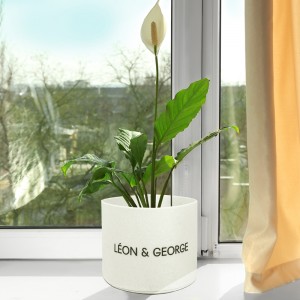Traditional landscape design is undergoing a significant transformation with the introduction of root control bags. These versatile gardening tools are offering landscape architects and designers new ways to create innovative, sustainable, and dynamic outdoor spaces.
Root control bags allow for greater flexibility in plant selection and placement. Designers can use different – sized bags to grow a diverse range of plants, from small ornamental flowers in 5 – gallon bags to large shrubs and small trees in 20 – gallon bags. This flexibility enables them to create layered and textured landscapes that were previously difficult to achieve with traditional planting methods. For example, in a public park, root control bags can be used to create a vertical garden wall with a mix of climbing plants and colorful flowers, adding a vibrant and eye – catching element to the space.
In addition, root control bags facilitate the creation of sustainable landscapes. Their excellent drainage and aeration properties reduce the need for excessive irrigation and chemical fertilizers, promoting environmentally friendly gardening practices. Landscape designers can also use the bags to incorporate native plants into their designs, which are better adapted to local climates and support local wildlife. This not only enhances the ecological value of the landscape but also reduces maintenance costs in the long run.
Furthermore, root control bags make it easier to implement seasonal changes in landscape design. Plants can be pre – grown in the bags off – site and then easily transported and installed in the landscape when the season is right. This allows for quick and seamless transformations of outdoor spaces, keeping them fresh and interesting throughout the year. As more landscape professionals embrace root control bags, the future of landscape design looks set to be more sustainable, creative, and adaptable.
Post time: May-07-2025

